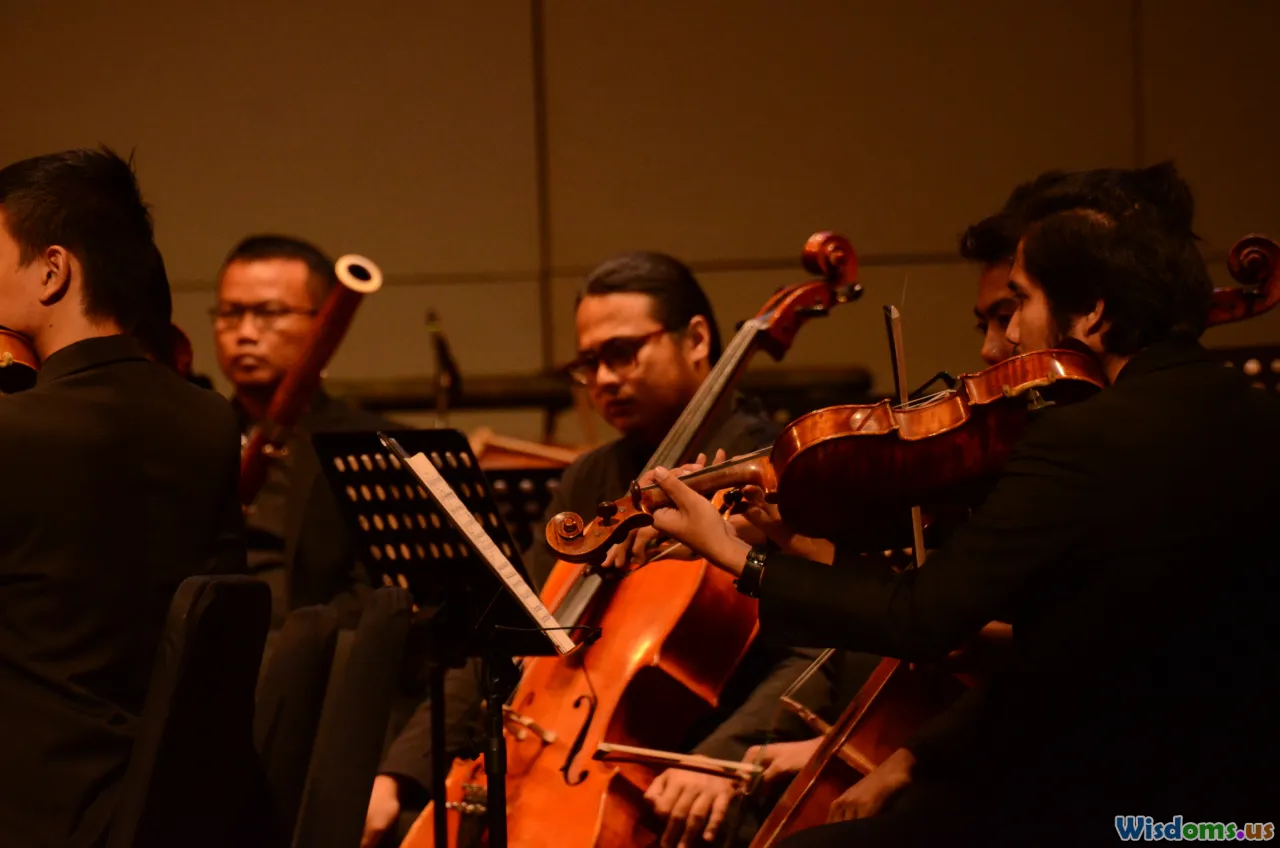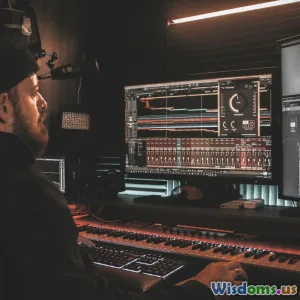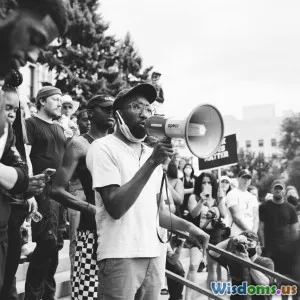Secrets Behind Hans Zimmers Most Iconic Film Soundtracks
15 min read Explore the creative secrets behind Hans Zimmer's most iconic film soundtracks and discover how his innovative techniques redefine cinematic music. (0 Reviews)The Secrets Behind Hans Zimmer's Most Iconic Film Soundtracks
When you hear the word “epic” in relation to film music, chances are Hans Zimmer’s name springs immediately to mind. From the thunderous pulse of "Inception" to the gentle heartbreak of "Interstellar," Zimmer's work has revolutionized what movie music can mean. His soundtracks have not only won Oscars and captivated audiences across the globe—they’ve fundamentally reshaped the language of modern cinema. But what exactly gives these scores their unmistakable power? Let’s pull back the curtain and discover the inner workings and creative secrets behind Hans Zimmer's legendary film soundtracks.
Collaborative Alchemy: Zimmer’s Creative Teams

Unlike the archetype of the solitary composer, Hans Zimmer thrives on creative collaboration. He establishes an atmosphere akin to an experimental workshop—most notably at his Remote Control Productions studio in Santa Monica, California. Here, Zimmer gathers musicians, sound engineers, and even electronic music producers from diverse backgrounds. The collaborative energy leads to tailored sonic palettes for each film.
An example: For "The Lion King" (1994), Zimmer merged African rhythmic traditions with Western symphonic traditions, bringing in Lebo M, a South African composer and vocalist. This cross-cultural fusion resulted in the unforgettable opening sequence “Circle of Life.” Similarly, in "Dunkirk" (2017), Zimmer worked closely with director Christopher Nolan and sound designer Richard King, integrating actual clock sounds and Shepard tones for escalating tension.
Zimmer’s openness to outside influences and team input is a departure from classical Hollywood composers who tended to control every note. By giving creative latitude to others, he produces scores that shimmer with unpredictability and authenticity.
Pioneering Technology: From Synths to Soundscapes

One hallmark of Zimmer’s style is his mastery of blending traditional orchestral instruments with cutting-edge technology. A self-taught synth enthusiast, Zimmer’s journey began with the Fairlight CMI (one of the first digital samplers) and sequencers in the 1980s. His breakthrough came with "Rain Man" (1988), employing synths and samplers to communicate Raymond Babbitt’s complex world.
Zimmer constantly innovates with audio manipulation. For "Interstellar" (2014), Zimmer invested months tweaking pipe organ recordings, looping them through digital processors until the sound filled IMAX theaters with cathedral-like vastness. In "Inception," the famous "BWAAAAM" brass effect emerged from taking a slowed-down version of Edith Piaf’s “Non, je ne regrette rien,” further processed through synthesizers—a detail most viewers missed, yet one that underpins the film’s connection between memory, time, and sound.
His embrace of DAWs (digital audio workstations), manipulation software, and audio plugins lets him sculpt hybrid textures neither wholly electronic nor orchestral. This versatility allows for unique sound worlds tailored to each story.
Thematic DNA: Leitmotifs and Musical Storytelling

Zimmer’s scores are rarely background wallpaper. At their core are distinctive, recurring motifs—musical phrases intrinsically tied to characters or key ideas. This classic technique, shaped by Wagner and later by John Williams, is given a modern twist by Zimmer.
In "Pirates of the Caribbean," the instantly recognizable “He’s a Pirate” theme, co-created with Klaus Badelt, mirrors Captain Jack Sparrow’s swagger. For “Gladiator,” the haunting elegy “Now We Are Free” blends Lisa Gerrard’s ethereal nonverbal vocals with minor-key harmonies to bathe Maximus’s journey in epic melancholy.
A telling case is "The Dark Knight" trilogy. Batman’s motif starts as a two-note pulse—almost subdued. Zimmer said, "Batman isn’t yet Batman" at the story’s outset, so the music must grow with him. As the trilogy progresses, his musical identity becomes bolder and more orchestral, paralleling the Caped Crusader’s evolution. By interweaving these themes, Zimmer plants emotional seeds throughout the films, letting them blossom at pivotal moments for dramatic impact.
Sound as Emotion: Crafting Experiential Scores

Zimmer doesn’t just score films—he shapes the way audiences feel and physiologically respond. One method is his use of tempo and rhythm to manipulate tension and resolution.
Consider "Dunkirk." Zimmer applies the "Shepard tone,” an auditory illusion of ever-ascending pitch, giving the sense that suspense will never break. Coupled with the relentless ticking of a pocket watch (recorded from Christopher Nolan’s own watch), the music physically induces anxiety, aligning the viewer’s nerves with the soldiers on screen.
Similarly, for "Interstellar", Zimmer asked Nolan for only a "one-page letter" about parenthood, rather than a full screenplay. The result? Themes of love, hope, and longing pour through tracks like "Stay" and "No Time for Caution," with the pipe organ invoking grandeur and vulnerability simultaneously. It’s music as lived experience: Zimmer aims for the audience’s heartbeat, not just their ears.
Breaking Traditions: Experimental Structures and Instrumentation

Zimmer often turns to non-standard instruments and musical forms when seeking fresh approaches. In "Sherlock Holmes" (2009), he reportedly visited a junkyard in Slovakia and assembled a ragtag orchestra of broken pianos, banjos, and a cimbalom (a hammered dulcimer native to Eastern Europe). The resulting score is eccentric, brash, and perfectly echoes Holmes' quirky intellect.
In "Man of Steel" (2013), eschewing John Williams’ triumphal Superman march, Zimmer opted for repeated low percussive patterns and surging, urgent textures performed by twelve legendary drummers including Sheila E. and Pharrell Williams. The drums do not just announce Superman’s power; they summon it.
Even in "Blade Runner 2049" (co-composed with Benjamin Wallfisch), Zimmer deconstructs Vangelis’ 1982 synth magic by fusing analog synths, Detroit techno textures, and gigantic dropped bass, resulting in a soundscape that acknowledges the past but propels the narrative into an uncanny future.
Adaptive Scoring: Merging Music with Visual Narrative

Perhaps the most distinct hallmark of Zimmer’s technique is adaptive scoring. Rather than writing music "to the frame," Zimmer often views entire scenes, dialog, and emotional rhythms, then jams live alongside playback, experimenting with different sound ideas until he finds the right emotional axis.
On "Inception," Zimmer spent months with Nolan refining the balance between reality and dream through gradual tempo shifts. Because of this process, the score functions almost like a living organism—morphing as the screen’s narrative switches between layers of reality.
For "The Thin Red Line" (1998), Zimmer composed hours of music before a single frame had been shot. Director Terrence Malick used these tracks on set, letting the cinematography, acting, and editing flow around Zimmer’s themes. The result: a synergy in which music and visuals are woven together from inception to completion—a practice now influential among top composers following Zimmer’s lead.
Bridging Genres: Pop, Electronica, and Classical Synthesis

Part of what makes Zimmer’s work simultaneously accessible and innovative is his ability to traverse, and oftentimes erase, genre boundaries. Raised on The Beatles before entering the classical world, Zimmer’s musical DNA pulls as much from progressive rock and electronica as from Mahler or Debussy.
His work on "Da Vinci Code" glides from Bach-like fugues to trance-inspired beats. On "Inception," the fusion of slow-motion brass, layered synths, and sampled screams turns the haunting dreamscape scenes into something you’d expect on a Massive Attack album as much as in a concert hall.
By enabling orchestras and rock bands to collaborate, Zimmer’s scores possess a modern hybridity that feels youthful without sacrificing sophistication—a formula that’s shot him to the top of both box office and concert circuit charts.
Shaping the Film Industry: Zimmer's Enduring Influence

Beyond individual films, Zimmer’s influence resonates throughout contemporary cinema and music culture. His modular workspace model has inspired other creatives to break down hierarchical barriers. Many of today’s leading composers—including Ramin Djawadi ("Game of Thrones") and Lorne Balfe ("Mission: Impossible – Fallout")—trained at Zimmer’s studio, often crediting him as a mentor who revolutionized soundtrack production.
The now-ubiquitous use of deep, synthesized brass "BWAAAAMs" in trailers started with "Inception"—a sonic icon since replicated by countless blockbusters. Meanwhile, collaborative genre-bending sessions championed by Zimmer have led production companies to seek similar dynamism from their music teams, changing the very way Hollywood procures and values music.
More so, the worldwide success of "Hans Zimmer Live" tours, in which the composer’s music is performed with energy and improvisation, blurs the boundaries between cinematic scoring and live performance, introducing orchestral music to fresh generations.
The Zimmer Touch: Actionable Creativity Tips for Aspiring Composers

What can emerging composers learn from Zimmer's approach? Here are actionable insights distilled from his career:
-
Embrace Collaboration: Don’t be an island. Work with improvisers, non-musicians, and technicians. Fresh eyes (and ears) produce fresh results.
-
Start with Story: Find the emotional heart of your subject—sometimes before a single script is read. Ask "What does this story feel like?"
-
Experiment Relentlessly: Synthesize new sounds, break old rules. Whether smashing instruments or manipulating plugins, push boundaries.
-
Leverage Technology: Get comfortable with DAWs, samplers, and sound libraries. They expand your creative possibilities exponentially.
-
Focus on Simplicity: Some of Zimmer’s most iconic themes use just a few notes. Prioritize memorability over complexity.
-
Bridge Genres: Mix world music, classical, electronic, or pop—they don’t have to be kept apart. See every genre as potential.
-
Score for Impact, Not Ego: Compose not for yourself, but for the audience’s experience. Music should serve the story.
-
Commit to Lifelong Learning: The best composers are perpetual students. Listen to everything, stay curious, and never get too comfortable.
Zimmer’s career reveals that genius lies as much in process—openness, collaboration, risk-taking—as in product. His soundtracks are reminders that television and film are, fundamentally, about the interplay of sight, sound, and soul.
As the world awaits his next act, Zimmer’s legacy isn’t just a gallery of indelible themes but a powerful roadmap for 21st-century creativity—where the only rule is to serve the story and move hearts. When the music soars, so do we.
Rate the Post
User Reviews
Popular Posts
















